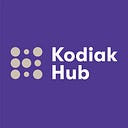Procurement just isn’t that sexy.
Chances are, the technology, data compilation and analytics you can receive from the capabilities of your workout app- used during your morning run- is more complex than the digital work tools you have at your job.
Ok, maybe this isn’t true for everyone, but for supply chain management professionals this example absolutely applies.
Procurement, Sourcing, and Quality management tasks drive top-line sustainability, performance, profitability, and product quality, but the technological advancements to complete most of those activities just aren’t in place.
Ask yourself, does your business lack the competency in procurement teams to identify, manage and/or avoid supply chain risks, or are procurement professionals just grossly unarmed with the right tools to complete their jobs- in line with current demands?
Deloitte’s CPO Survey 2016, “proposed that leading procurement practice might be defined less by the war for talent and more by the war for technology. A recent global survey by Deloitte and the MIT Sloan Management Review5, also found that while 90% of executives anticipate that their industries will be disrupted by digital technologies, only 44% are adequately preparing for the disruptions to come, and only 5% have leading class capability” (Deloitte CPO Survey 2017).
That means out of the 480 CPO’s surveyed by Deloitte, only 24 CPO’s have integrated their procurement activities with world-class technology. Moreover, less than 50% are adequately preparing for the coming disruptions in supply chain management technology.
Imagine if a category manager could receive the same analytics- available to her on her morning run- through her FitBit App, at work. She would be able to select suppliers from her supplier-base with the same efficiency and certainty she has when someone asked her how far she ran this morning, and what her bpm was.
While this all sounds very simple on paper, there are multiple hoops to jump through when implementing supply chain management technology, to aid procurement.
I’m not here to solve those problems, nor do I think that is the key value I can provide through this post.
I want this to be a wake-up call to the 95% of CPO’s, and C-suite management above them, whom are allowing their businesses to fall behind the technological curve.
Procurement just isn’t that sexy
Procurement is an area of supply chain management that has become ‘the last guy asked to dance’ at the high school prom. But, instead of dancing, it’s becoming one of the last business areas to completely digitalize its functionalities.
There’s nothing sexy about marginal wins on purchasing, ensuring product quality, managing supplier’s compliance, assuring production by ISO standards, and feeding back information to product development.
Nonetheless, procurement is one of the most business-critical areas for driving top-line success and development in areas such as: sustainability, quality, performance and profitability.
The methodology behind improving procurement technology is the same methodology behind improving any business-area. Digitalization offers opportunities for more robust data sets- regarding suppliers, product, and performance- putting procurement professionals in the best possible scenarios to make agile business decisions.
(As shown in the graphic below) some of the main concerns/barriers for technological implementation into the procurement process, is the overall quality of data sets, lack of data integration, skills/capability of analytics, and/or the limited endorsement of senior stakeholders.
What I still struggle to wrap my head around, is the disconnection between the need and actualized implementation of procurement-aided technology.
Well, let’s just dumb it down in the same manner so many procurement executives have decided to do themselves….
Maybe, procurement just isn’t sexy enough.
The stakes are getting higher
Upholding promises to external stakeholders surrounding quality, sustainability, and performance is more crucial now than ever before.
In a completely digitally-equipped consumer-world, one small mishap in these three parameters- of procurement promises- can land a brand name on the front page of some crappy PR coverage rather quickly.
You’ve seen the headlines:
How many more horrific supplier related stories does it take, to give business executives that kick in the butt to realize, countering supplier risks starts with better transparency?
Better supply chain transparency is built through the implementation of digital networks for procurement activities. One of the most crucial areas for improvement is within supplier collaboration. There are digital solutions available on the market- complete with process/document management, automation, follow-up capabilities, feedback loops, contact management, and intuitive analytics– built for procurement-support. Current modes-of-management within these supplier relationships includes time-inefficient methods of operation; costing procurement teams money on their bottom line. Moreover, mishandling of supplier-related supply chain risks have direct effect on quality management.
“A company with a highly developed culture of quality spends, on average, $350 million less annually fixing mistakes than a company with a poorly developed one” (hbr.org).
Procurement, in recent years, has become an increasingly business-critical area, for meeting top-line KPI’s. Check out the graphic below provided by CapGemini’s 2015-16 CPO Survey.
This graphic highlights that the spend being put in the hands of procurement teams is has grown exponentially. Yet, the digital tools needed to assure that spend’s return don’t exist in parallel.
Best put by Kurt Cavano, “The lack of energy and knowledge around technology is problematic and disappointing. There is clearly a need for clarity and education around supply chain technology. If supply chain executives aren’t tracking the latest innovations in collaboration and execution, then their ability to evolve and transform to mitigate risk is greatly marginalized”.
I believe a mic drop is in order.
Until next week.
This publication is brought to you by author Sam Jenks, but also on part by Kodiak Rating — A Supplier Relationship Management SaaS functioning out of Stockholm, Sweden. Kodiak Community intends to challenge traditional business practices with innovative thinking and creation.
